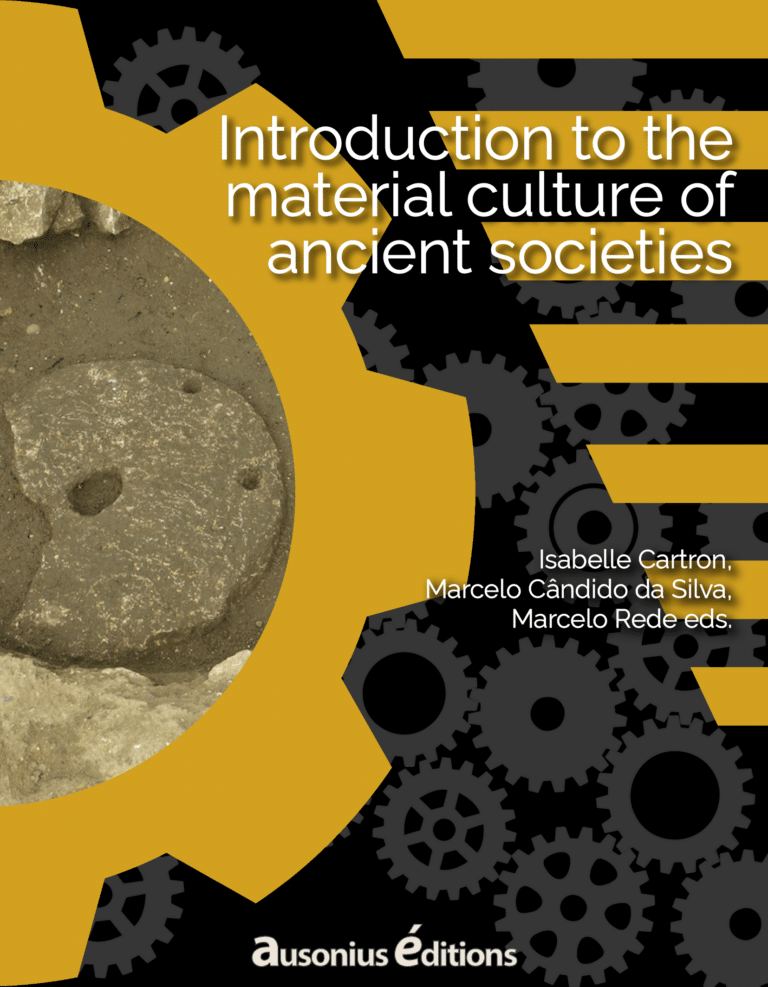Food crises are a recurring problem in the history of ancient societies, whether in their catastrophic form, famine, a shortage of food or purchasing power that leads directly to excess mortality from starvation or hunger-induced diseases; or in their endemic form, scarcity, the main manifestation of which is chronic malnutrition.1 Written testimonies are, to this day, the main source of information we have about these phenomena. The accounts of the annals, chronicles, stories, and other written texts suggest that scarcity was more common than famines, although it is not always possible to distinguish them if we take only their words into account. Frequently, the chroniclers simply noted, for a given year: “There was a great famine”, without further information.
Most detailed accounts usually associate food crises with harvest problems, caused mainly by climatic phenomena: harsh winters, prolonged droughts, floods, etc. Today, thanks to advancements in paleoclimatology, we have a clearer understanding of the role of exogenous factors (solar and volcanic activity, gas emissions) and endogenous factors (fluctuations in oceanic and atmospheric circulations) in the variability of the climate system in ancient societies.2 Proxies, natural archives that allow the measurement of past climatic conditions from biological, geochemical, or sedimentary indicators, are abundant for the last two millennia. Some of these proxies, such as pollens, sediments, and tree rings, are responsible for the reconstitution of the major environmental crises since antiquity. From the early 1980s, climate specialists combined various types of proxies, identifying periods of colder weather and major disturbances from the fifth century A.D. Palaeoclimatologists projected these disorders on a timeline, giving rise to four main classifications: LALIA (Late Antiquity Little Ice Age, c.535-c.660), DACP (Dark Age Cold Period, c.660-765), MCA (Medieval Climate Anomaly, 900-1200) and LIA (Little Ice Age, 1250-1700). In addition to these more general classifications, the analysis of the paleoclimatic data makes it possible to identify the different intensities of climatic phenomena according to the different regions of Europe.3 The Paleoclimatic data allowed to attest the close relationship between food crises and climate variations in ancient societies. Until the advent of the Industrial Revolution, European agriculture had low incomes, which made it extremely sensitive to changes in temperature. From Roman times through to the medieval period, cereal productivity reached an average of 4 or 5 to 1 when conditions were favourable.4
![Utrecht Psalter, f. 6v. [Utrecht, Universiteitsbibliotheek, MS Bibl. Rhenotraiectinae I Nr 32]](https://nakala.fr/iiif/10.34847/nkl.f6e596cz/full/700,/0/default.jpg)
However, it would be misleading to sum up famine and scarcity in ancient societies as climate issues. A first example is what happened in Western Europe during Carolingian times. If we look at Fritz Curschmann’s 1900 survey, there are 68 references to famine and scarcity in written sources between 700 and 1100, 7 of them for the 8th century and 27 for the following century.5 In view of the good climatic conditions that prevailed throughout the 9th century, the explanation for the recurrence of food crises must be sought in other factors. A second example is the period be- tween the 11th and 13th centuries, described by several historians as the “eclipse of famine”, partly because of the supposed “silence” of written sources about it, and partly because of the good climatic conditions that would have prevailed then. Pere Benito I. Monclús identified dozens of references to famine and scarcity between 1033 and 1260, especially in regional chronicles. Two factors, according to him, explain the spread of food crises: first, the circulation of information on production and the price of cereals through the network of urban markets. The mere spread of a rumour announcing the possibility of bad or poor harvests in a city or region could provoke chain reactions even in very distant areas, with the closure of markets and the unleashing of speculative behaviour which caused the price of cereals to rise. Secondly, there is an “international” grain market, created at the end of the Middle Ages and based on the long-distance transport of grain surpluses by sea and river.6 In other words, political crises, wars and violence, administrative inefficiency, corruption, speculation, and unequal access to food are factors that help to understand the recurrence of scarcity and hunger in ancient societies.
It would be a mistake to believe that ancient societies behaved passively in the face of food crises. There is a vast literature on the practices of the Roman elites and the action of imperial power to guarantee the food security of urban populations. After the fifth century, this function, converted into a duty of charity towards the starving poorest, has come to be exercised largely by local, secular, and ecclesiastical elites, especially bishops, but also by kings and the Pope. Gregory the Great’s correspondence shows the Pope’s action to ensure the supply of the city of Rome, whose population, much smaller than at the time of the Empire, still needed important quantities of cereals. In Gaul, Venancio Fortunato speaks of a count, Sigoald, who fed the poor in the name of King Sigebert. In the 14th and 15th centuries, the communes in northern Italy were efficient managers of the fight against shortages in the region, even though their great purchasing power caused food crises in Northern Europe. The analysis of material culture provides examples of the resilience and adaptability of ancient communities to food crises. This is the case with grain storage silos. The excavations carried out in the Paris region between the 1980s and the 2000s identified 224 silos for the Early Middle Ages, corresponding to 9% of the structures discovered during these excavations. It was also possible to identify a certain stability in the practice of silage from the beginning of Carolingian times until the 11th and 12th centuries. More importantly, we can observe a strong growth in the storage capacity of these silos in the passage from the 8th to the 9th century, accompanied by a certain stability or a decrease, even if small, between the 10th and 11th centuries. Beside the silos, in the same period there are the development of large granaries.7
It is a paradox that this increase in capacity of food storage has been accompanied in the same period by an increase in the references to famines. This shows that the reasons of food crises should be researched preferably in the difficulties of access to food by subordinate groups. The best indication, in this sense, is that all references to cereal prices in texts from the 6th to the 10th centuries had a close connexion with famine and scarcity. In these accounts, the actions of speculators were responsible for food shortages and even cases of cannibalism. We cannot underestimate the attachment of these texts to a notion of moral economy in which beyond a certain limit profit became an illegal practice.8 Nevertheless, famine and scarcity were also the result of a growing economy, which was extremely unequal in terms of access to food. This world of contrasts, where abundance and scarcity coexisted, is very well described by means of two examples given in this chapter. First, the excavations at Hamage Monastery, where there is evidence of the food practices of privileged groups. Secondly, the excavations at La Confiserie, witness to the only probable case of survival cannibalism for the entire Early Middle Ages.
Read more
References
- Benito i Monclús, P., 2011: “Famines sans frontières en Occident avant la ‘conjoncture de 1300’”, in: Bourin et al., ed. 2011, 37-86.
- Bourin, M., Drendel, J. & Menant, F., ed., 2011: Les disettes dans la conjoncture de 1300 en Méditerranée Occidentale, Rome.
- Cândido da Silva, M., 2014: “L’économie morale carolingienne”, Médiévales, 66, p. 159-178.
- Cândido da Silva, M. & Newfield, T., 2024: “Mudanças climáticas, vulnerabilidade e resiliência no Mediterrâneo medieval”, Tempo, Niterói, 30, n. 2, URL: https://doi.org/10.1590/TEM-1980-542X2024v300206
- Comet, G., 1996: “Productivité et rendements céréaliers : de l’histoire à l’archéologie”, in: L’homme et la nature au Moyen Âge. Paléoenvironnement des sociétés occidentales, Actes du Ve Congrès international d’Archéologie Médiévale (Grenoble, 6-9 octobre 1993), Caen, p. 87-91.
- Curschmann, F., 1900: Hungernöte in Mittelalter. Ein Bertrag zur Deutschen Wirtschaftsgeschichte des 8 Bis 13. Jahrhunderts. Leipzig.
- Devroey, J.-P., 2019: La nature et le roi. Environnement, pouvoir et société à l’âge de Charlemagne (740-820), Paris.
- Gentilli, F., 2008: “Silos et greniers. Structures de conservation des grains sur les sites ruraux du haut Moyen Âge d’après des exemples franciliens”, in: Gentilli & Lefevre, ed. 2008, 97-123.
- Gentilli, F. & Lefevre, A., ed., 2008: L’habitat rural du haut Moyen Âge en Île-de-Franc, BAVF Suppl. 2, p. 97-123.
- Haldon, J., 2024: “Society, climate and history: a case study and its methodological challenges”, Tempo, Niterói, 30, n. 2, URL: https://doi.org/10.1590/TEM-1980-542X2024v300207
- Luterbacher, J. et al., 2016: European summer temperatures since Roman times, Environ. Research Letters, 11, URL: https://iopscience.iop.org/article/10.1088/1748-9326/11/2/024001
- Ó Grada, C., 2009: Famine. A Short History, Princeton.



